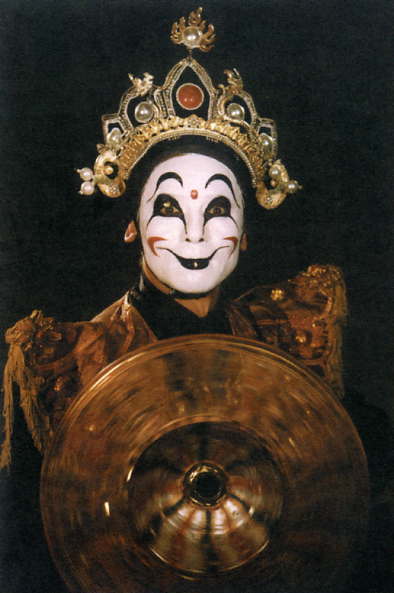| Art Q&A > Opera |
|
|
Changing Faces
Changing Faces is a difficult technique in opera performance. It is considered to be stunts and only mastered after hard training. Face changing is also a special technique used to exaggerate the inner feelings of characters, portray their dispositions, set off the atmosphere and improve the effects. Facial changes expressing sudden changes in the feelings of a character are mostly done in four ways:
Blowing Dust: The actor blows black dust hidden in his palm or close to his eyes, nose or beard, so that it blows back into his face.
Manipulating Beard: Beard colors can be changed while the beard is being manipulated, from black to gray and finally to white, expressing anger or excitement.
Pulling-down Masks: The actor can pull down a mask which has been previously hidden on top of his head and which leaves his face red, green, blue or black, to demonstrate happiness, hate, anger or sadness, respectively.
Mop: The actor mops out the greasepaint, which is previously hidden in his sideburns or eyebrows, around his eyes and nose, thus change his facial appearance. |
||||
All rights reserved. Reproduction of text for non-commercial purposes is permitted provided that both the source and author are acknowledged and a notifying email is sent to us. |
||||
 |
